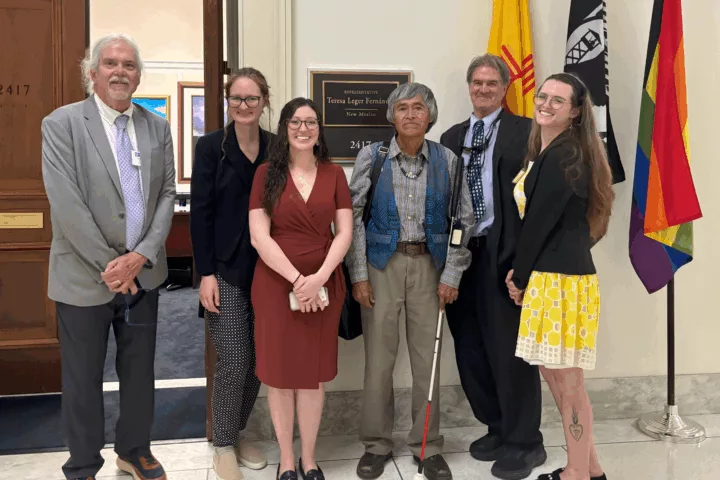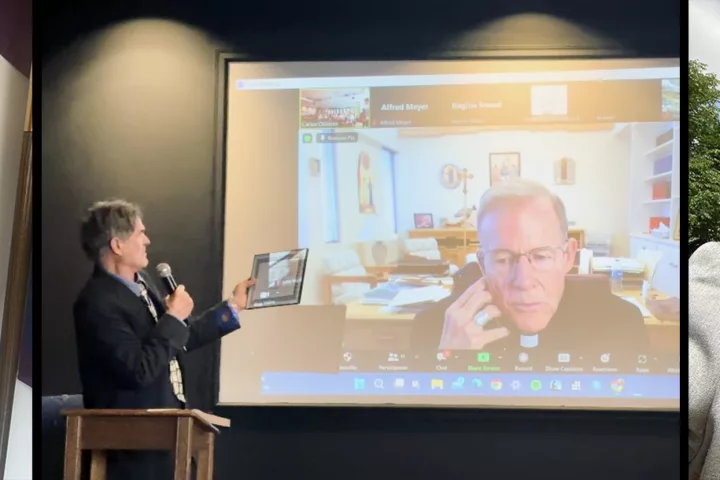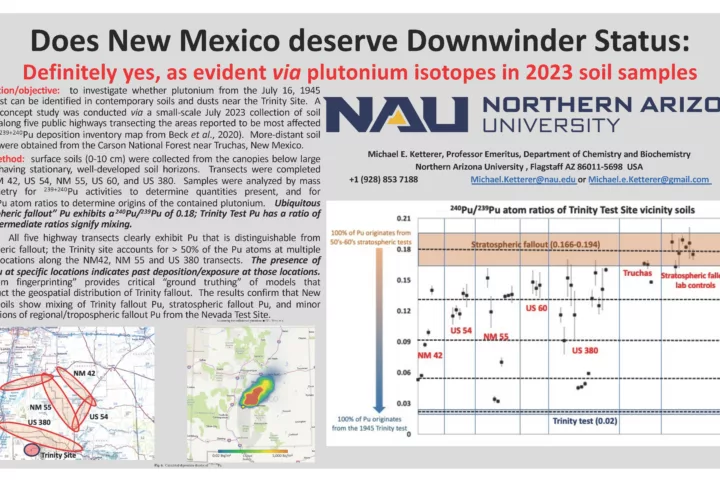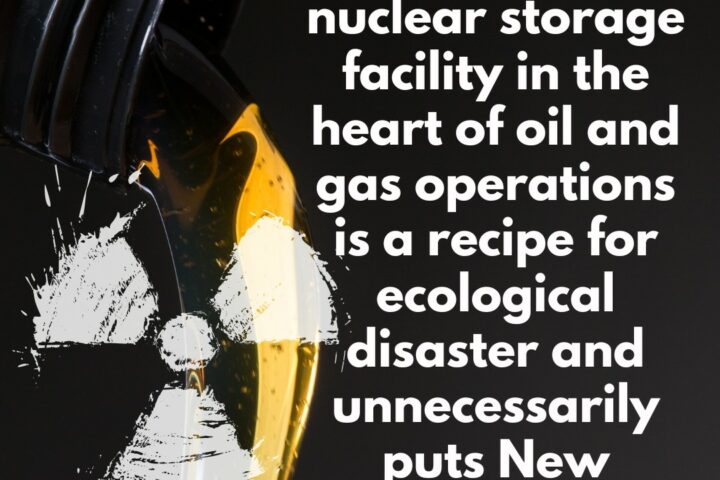Your Nuclear Watch New Mexico team has just returned from a weeklong trip to Washington D.C. (we went so you don’t have to!). The Alliance for Nuclear Accountability (ANA) hosts an annual “DC Days” conference and following Spring Meeting, and we proudly joined as part of a record number of groups this year. Over 60 individuals from 30+ organizations journeyed to DC to lobby congress on nuclear weapons, energy, and waste policy on behalf of the frontline nuclear communities we represent. Members were present from groups representing the entire U.S. nuclear complex, including sites in Georgia, New Mexico, Tennessee, California, Missouri, Colorado, Idaho, Nevada and beyond. NukeWatch NM brought all three staff members—Jay Coghlan, Scott Kovac, and Sophia Stroud (whose participation was made possible by a youth scholarship from ANA)—to participate in DC Days and the subsequent two-day spring meeting. The ANA DC Days schedule included over 70 meetings with senators, representatives, and other relevant agencies, such as the Department of Energy, the Government Accountability Office, and the Defense Nuclear Facilities Safety Board. Our NukeWatch team attended nearly 30 of these meetings. The Alliance for Nuclear Accountability put together a new report to present our “asks” to congress as a coalition, including analysis and recommendations for nuclear weapons, nuclear waste, and nuclear energy policy and funding. Please click HERE for the full report, and HERE for a short summary.
I was glad to see increased representation from Nevada this year, and especially Indigenous representation. In light of the current administration’s attacks on Environmental Justice, it is more important than ever that ANA as a whole, as well as individual member groups, continue to prioritize uplifting Native American voices, not only because of their deep cultural, spiritual, and social connections to the land, including sacred sites and traditional knowledge essential to religious freedom and access, but also because of the violent legacy and ongoing reality of nuclear colonialism, in which Indigenous lands and peoples have been deliberately and disproportionately targeted in the nuclear industry with uranium mining, nuclear weapons testing and production, and the disposal of radioactive waste. To learn more about Nuclear Colonialism, see: www.networkadvocates.org/downwinders and read Nuclear Nuevo México: Colonialism and the Effects of the Nuclear Industrial Complex on Nuevomexicanos by Myrriah Gómez.






